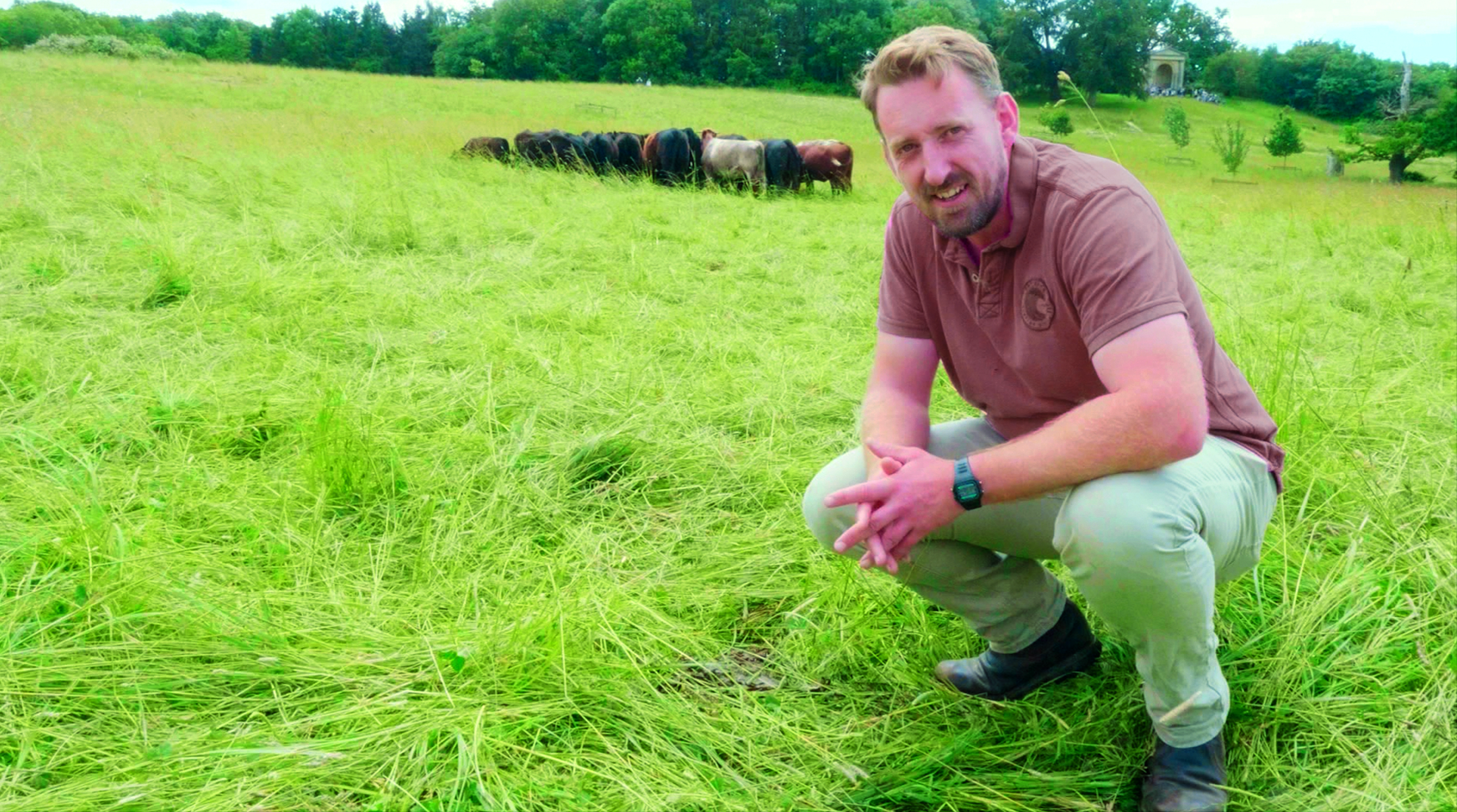

Rob Havard’s herd of pedigree Aberdeen Angus is bred to produce breeding stock bulls, and comprises 60 sucklers, plus followers. As Rob is a member of the Pasture for Life Association (PFLA) his cattle are fed on a full forage diet, and as such, they are entirely out-wintered, an approach Rob has pioneered as a regenerative mob-grazing system on existing permanent grassland and sown grass leys, which on heavy clay, can be a challenge.
Rob’s family have been cattle farmers for generations and have been farming at Home Farm in Worcestershire for over 100 years. According to family legend, Rob’s Welsh great-grandfather used to bring his cattle here to market on the train and one day he just sold the cattle, bought a farm and never went home. Following in his footsteps, Rob now farms with his father and keen to expand, they recently took on the tenancy of Phepson Farm, along with entering a new environmental stewardship scheme. This gave them the chance to experiment with establishing a long term, diverse meadow pasture.
‘We were already buying our stewardship mixtures from Cotswold Seeds because of the support we get from Sam and Ian, plus the fact that their prices are competitive, and the mixtures are effective. There’s also the ability to get a bespoke mix for exactly what we want.’
So Rob and his father put a proposal to the landowner to create a diverse meadow mixture, by combining long term traditional grasses such as meadow foxtail, smaller catstail and the finer leaved fescues, along with native clovers, trefoils and wildflower species. The chief goals were to improve rooting depth to aid drainage, but the environment is also an important consideration for Rob and his father. ‘We were aiming to hit a sweet spot, where improved productivity also brings ecological gain.’
The diverse mixture contains around 20 species and Rob describes the results as ‘remarkable,’ for both drainage and wildlife.
‘The soil is so good it mends itself after winter. The deep rooting species such as sorrel and yarrow have worked so well to drain the clay - you can walk on the land after heavy rain and it’s dry as a bone. In May it looked like it was totally poached but by June it was completely recovered. On land that’s just had simple, shallow rooting grass leys on it, that never happens. The wildflowers established well across the fields, which in turn became a magnet for the butterflies and other beneficial insects and pollinators.
‘The trampling of the sward during mob-grazing creates a carpet of residual material, a lot of people might say that we waste a lot of grass. But the carpet keeps the cattle up and out of the mud over winter, and gives us an armour on the soil, so the grass grows back up through this mesh with a really good growth rate. It also keeps the soil warmer, allowing growth beyond Christmas, and then it’s away again in February.‘
There have also been plenty of other benefits to the multi-species mixture. There’s a minimum of 12% organic matter in the fields now, and species like yarrow are really good for the fungal balance within the soil. Meanwhile the meadow foxtail gives early and late grazing, herbs and legumes like ribwort plantain and birdsfoot trefoil create a wider mineral profile in the forage for the grazing animals, along with good protein levels to help provide a balanced, healthy diet.
Rob has had similar results when using the mob grazing system on permanent pasture, with robust grasses like cocksfoot and Timothy growing at different times at the shoulders of the season in both the spring and autumn to extend the grazing season.
The system has proved so successful that Rob is now running training courses for other farmers.
‘If we can do over-wintering on our heavy clay with 30 inches of rain a year, it’s possible anywhere,’ he says. ‘The diversity works really well for the soil, for the grazing animals and for the environment, and stewardship scheme pays for the seed - so it’s a win-win.’
Date Posted: 18th February 2019



